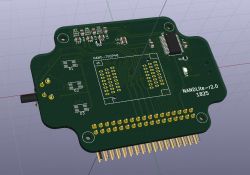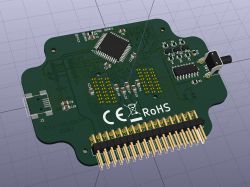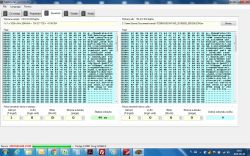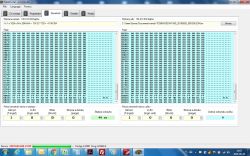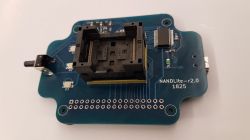
A new version of the NANDLite v2.0 programmer is ready.
The new version works as intended. It generates 1.8V / 3.0V voltage to power the NAND memory, so you can use this programmer to read memories from e.g. SSD hard drives.
The new programmer also has an EXT connector, through which it will be possible to attach an external ZIF48 adapter, or any other.
Soon I will describe its pinout layout, because this connector will also be associated with the scripting system, so everyone will be able to define its operation.
The new programmer, compared to the previous version, has many more technical possibilities. Having an appropriate adapter, you can, for example, program SPI memories with a voltage of 1.8V.
The list of possibilities is, of course, much larger, because the plan also includes the implementation of a serial bus monitor, programming of the eMMC memory in the system without desoldering the system from the motherboard, but also the ability to remotely manage the programmer via the GSM network!
I do not want to go ahead for now, but I can already say that the programmer in the current version will also soon gain a Li-Ion battery and the possibility of programming via wireless interfaces, i.e. Bluetooth and GSM / GPRS. This will apply in the case of the necessary galvanic isolation, but also, for example, to monitor serial buses remotely, therefore continuing my statement: The programmer under development will not only be an ordinary programmer, but a very useful work tool - all without hardware changes in the currently developed programmer .
The important thing is that NANDLite v2.0 is fully compatible with v1.0, so it works identically to the previous version. Uses the same programming app.
At the moment, I have the materials to build at least 5 pieces of programmers "on the spot". Therefore, if anyone would like to acquire such art, please do not hesitate to contact me.
Best regards and feel free to ask any questions.


